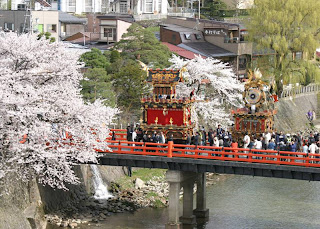 |
Cambodian New Year (Khmer) or Chaul Chnam Thmey, in the Khmer language, literally "Enter Year New", is the name of the Cambodian holiday that celebrated the New Year. The holiday lasts for three days beginning on New Year's day, which usually falls on April 13th or 14th, which is the end of the harvesting season, when farmers enjoy the fruits of their labor before the rainy season begins. Khmer's living abroad may choose to celebrate during a weekend rather than just specifically April 13th through the 15th. The Khmer New Year coincides with the traditional solar new year in several parts of India, Myanmar and Thailand.
Cambodians also use Buddhist Era to count the year based on the Buddhist calendar. For 2011, it is 2555 BE (Buddhist Era).
Maha Songkran
Maha Songkran, derived from Sanskrit Maha Sankranti, is the name of the first day of the new year celebration. It is the ending of the year and the beginning of a new one. People dress up and light candles and burn incense sticks at shrines, where the members of each family pay homage to offer thanks for the Buddha's teaching by bowing, kneeling and prostrating themselves three time before his image. For good luck, people wash their face with holy water in the morning, their chests at noon, and their feet in the evening before they go to bed.
Virak Wanabat is the name of the second day of the new year celebration. People contribute charity to the less fortunate by helping the poor, servants, homeless, and low-income families. Families attend a dedication ceremony to their ancestors at the monastery.
Tngay Leang Saka
Tngay Leang Saka is the name of the third day of the new year celebration. Buddhists cleanse the Buddha statues and their elders with perfumed water. Bathing the Buddha images is the symbol that water will be needed for all kinds of plants and lives. It is also thought to be a kind deed that will bring longevity, good luck, happiness and prosperity in life. By bathing their grandparents and parents, children can obtain from them, best wishes and good advice for the future.
New Years Customs
In temples, people erect a sand hillock or temple grounds. They mound up a big pointed hill of sand or dome in the center which represents sakyamuni satya, the stupa at Tavatimsa, where the Buddha's hair and diadem are buried. The big stupa is surrounded by four small ones, which represent the stupas of the Buddha's favorite disciple: Sariputta, Moggallana, Ananda, and Maha Kassapa. There is another tradition....pouring water or liquid plaster (a mixture of water with some chalk powder) on someone.
The Khmer New Year is also a time to prepare special dishes. One of these is a "kralan", a cake made from steamed rice mixed with beans or peas, grated coconut and coconut milk. The mixture is stuffed inside a bamboo stick and slowly roasted.
Tres
A game played by throwing and catching a ball with one hand while trying to catch an increasing number of sticks with the other hand. Usually, pens or chopsticks are used as the sticks to be caught.
Chol Chhoung
A game played especially on the first nightfall of the Khmer Yew Year by two groups of boys and girls. Ten or twenty people comprise each group, standing in two rows opposite each other. One group throws the "chhoung" to the other group. When it is caught, it will be rapidly thrown back to the first group. If someone is hit by the "chhoung," the whole group must dance to get the "chhoung" back while the other group sings.
Chab Kon Kleng
A game played by imitating a hen as she protects her chicks from a crow. Adults typically play this game on the night of the first New Year's Day. Participants usually appoint a strong player to play the hen who protects "her" chicks, while another person is picked to be the "crow". While both sides sing a song of bargaining, the crow tries to catch as many chicks as possible as they hide behind the hen.
Bos Angkunh
A game played by two groups ob boys and girls. Each group throws their won "angkunh" to hit the master "angkunhs", which belong to the other group and are placed on the ground. The winners must knock the knees of the losers with the "angkunh". "Angkunh" is also the name of an inedible fruit seed, which looks like a knee bone.







































